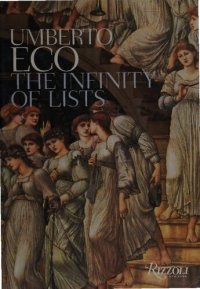
In the history of Western culture we find lists of saints, ranks of soldiers, accounts of grotesque creatures, inventories of medicinal plants and hordes of treasure. There are practical lists that are finite, such as catalogues of books in a library: but there are others that are intended to suggest countless magnitudes and thereby arouse in us a dizzying sense of the infinite. This infinity of lists ,s no coincidence: a culture prefers enclosed, stable forms when it 1s sure of its own identity, whereas when faced with a jumbled accumulation of ill-defined phenomena, 1t starts making lists. The aesthetics of lists runs throughout the history of art and literature. We see 1t at work not only in ancient bestiaries. the celestial hosts of angels. or the naturalist collections of the sixteenth century. We find it also more obliquely from Homer to Joyce and Pynchon, from the treasures of Gothic cathedrals to the fantastical landscapes of Bosch and cabinets of curiosities. until we get to Andy Warhol and Damien Hirst in the twentieth century In this beautifully illustrated edition. Umberto Eco reflects on how the idea of catalogues has changed over the centuries and how, from one period to another, it has expressed the spirit of the times. His essay 1s accompanied by a literary antholo9y and a wide selection of works ot art illustrating and analyzing the texts presented. This new volume is a companion to History of Beauty and On Ugliness.
Download the book Infinity of Lists for free or read online
Continue reading on any device:

Last viewed books
Related books
{related-news}
Comments (0)